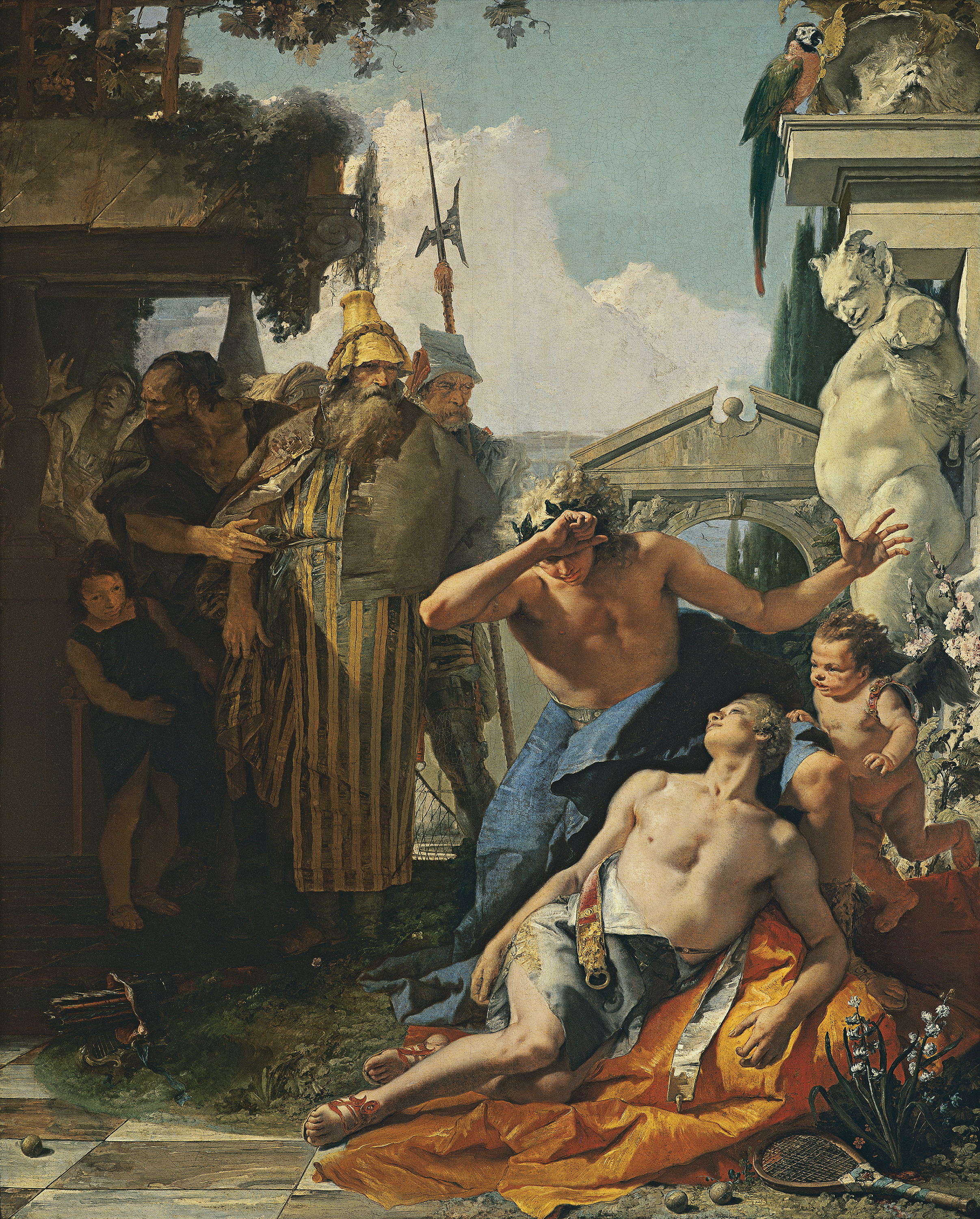The Death of Hyacinthus
There's no doubt that the Baroque era gave us some of the most decadent and breathtaking pieces of art. One of the most prominent Venetian painters, Giovanni Battista Tiepolo was indeed one of those individuals whose art leaves one in awe. Not only in his composition but also in the depth of emotion the pieces seems to portray.
 |
| The Death of Hyacinthus, Giovanni Battista Tiepolo c.1752-3 Thyssen-Bornemisza Museum, Madrid, Spain oil on canvas, approx. 112.9 91.3 in |
a quick overview of the piece by the Thyssen-Bornemisza Museum
 |
| a closer look at the two lovers, a mirror to what Wilhelm must've felt |
 |
| the flower hyacinth has it's root (literally) in greek mythology |
Research and Virtual Tour
The research I performed was centered around Tiepolo, Wilhelm, and the reason behind the painting. This spectacular piece of work would not have been possible without both of them (and greek mythology of course). I was cruising through the Thyssen-Bornemisza Museum's virtual collection and this one caught my eye immediately. Not only was the artwork magnificent, but the story behind it stayed with me. It exemplified the role of artists in one's society. During the 1700s artists were highly valued for their skill and held a prominent position in society.
The mark of the artists of the period is felt in every painting, architecture, and statue. Much like we hold certain photographs of those we care about near and dear to us, people like Wilhelm held works like The Death of Hyacinthus, near and dear to them because that was their way of commemorating those they had loved. And while commissioning such art was a normal practice during the era, Wilhelm's case stands out as we do not see any LGBT representation that is as present as in The Death of Hyacinthus, they're often subtle and/or hidden and changed by history. The piece was memorable not only for its artistic ingenuity but also for what it represented.
Works Cited
Christiansen, Keith. “Tiepolo, Theater, and the Notion of Theatricality.” The Art Bulletin, vol. 81, no. 4, 1999, pp. 665–692. JSTOR, www.jstor.org/stable/3051339. Accessed 13 Dec. 2020.
“Hyacinth in Greek Mythology.” Greek Legends and Myths, www.greeklegendsandmyths.com/hyacinth.html. Accessed 13 Dec. 2020.
“Hyacinth in Greek Mythology.” Greek Legends and Myths, www.greeklegendsandmyths.com/hyacinth.html. Accessed 13 Dec. 2020.
“History of Art: Baroque and Rococo - Giovanni Battista Tiepolo.” Www.All-Art.org, www.all-art.org/history294-10.html. Accessed 13 Dec. 2020.
“The Death of Hyacinthus.” Museo Nacional Thyssen-Bornemisza, www.museothyssen.org/en/collection/artists/tiepolo-giambattista/death-hyacinthus.
“Tiepolo Paintings, Bio, Ideas.” The Art Story, www.theartstory.org/artist/tiepolo/#nav. Accessed 13 Dec. 2020.
Tiepolo, Giovanni.
